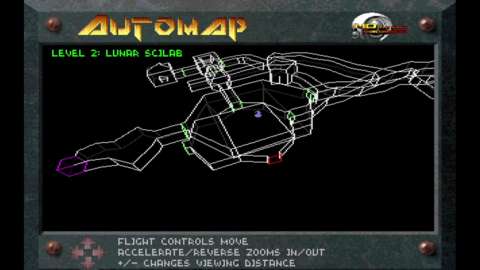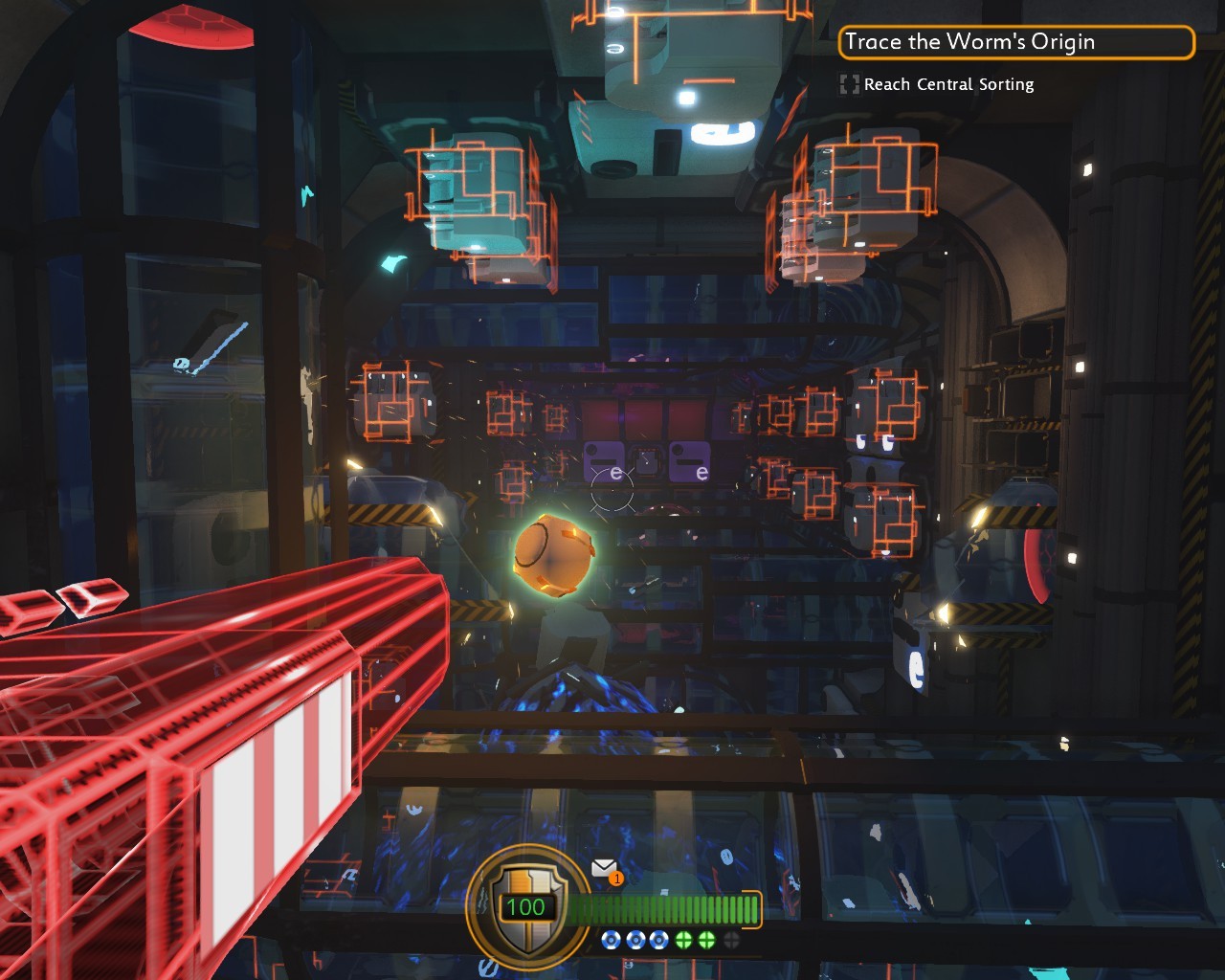The Descent Series Should Rise Again
Once more into the depths.
Almost two decades ago, there was a game that vexed me. It disoriented me, turned me around, killed me mercilessly, and changed the way I played video games for the rest of my life. That game was Descent. As a mercenary pilot, I plunged into zero-gravity mining facilities throughout the solar system to combat rogue robots and rescue hostages, all the while navigating labyrinthine mazes of forking tunnels and multi-exited chambers. While space flight games like Star Wars: X-Wing introduced me to the "six degrees of freedom" control scheme, it was Descent that taught me how precious that freedom can be.
And it wasn't just me. According to Wikipedia, the Descent series sold over 40 million copies. Even if you take these numbers with a grain of salt, there's no denying that a generation of PC gamers got their first-person shooter kicks in the mines of Descent, its sequels, and its expansion packs. The late '90s saw a proliferation of games in that genre, but since the turn of the century, first-person shooters have largely left the "six degrees of freedom" subgenre behind in favor of putting your boots on the ground. Yet with the advent of promising virtual reality headsets and the resurgence of space sims, it's time for Descent to return.
Minecraft – Kung Fu Panda DLC Trailer Sclash - Console Release Date Trailer Kingdom Come: Deliverance 2 - Official Cinematic Announcement Trailer Stellar Blade - BIBI ‘Eve’ Official Music Video Trailer | PS5 Apex Legends: Urban Assault Collection Event Trailer Total War: WARHAMMER III - Elspeth von Draken Gameplay Showcase Potionomics: Masterwork Edition - Official Announcement Trailer Genshin Impact - "Arlecchino: Sleep in Peace" | Official Character Teaser Snowbreak: Containment Zone - "Gradient of Souls" Version Trailer Harold Halibut GameSpot Video Review Nancy Drew: Mystery of the Seven Keys | World Premiere Official Trailer Modern Warfare III & Warzone - Official Cheech & Chong Bundle Gameplay Trailer
Please enter your date of birth to view this video
By clicking 'enter', you agree to GameSpot's
Terms of Use and Privacy Policy
Of course, just because something hasn't been around for a while doesn't mean it should come back, and I'll confess that my enthusiasm to see the series return is partially motivated by personal nostalgia. As I mentioned before, I didn't find Descent to be an easy game and many of my hours spent with it were frustrating ones. The level layouts started off fairly simple, but soon developed into twisting, branching, head-spinning mazes in which it was easy to get turned around and spend significant time retracing my steps. The automatically charted wire-frame map offered some crude assistance, but if I counted on it to navigate during the desperate race to the exit of each level (triggered once you blew up your primary target), things often went poorly.
A similar fate often befell me in combat. The virus-corrupted robots arrayed against me came in various models, some tougher and more powerful than others. The littlest ones were pretty easy to dispatch, but unless I was careful about every corner I turned, they'd often tag me once or twice before I shot them down. When bigger baddies came into play, evasion became an even more crucial part of combat as I tried to land shots while dodging enemy fire. Shield and health pickups were precious resources in this pre-regenerating-health shooter, but there never seemed to be enough around when I needed them. I died often in those tunnels, more often than I'd care to admit.

And yet, it was these challenges that drew me back into those mines, time and time again. Forming a mental map of Descent's levels was one of the trickiest tasks I'd encountered in a game at that point, but it was vital to my success, and so I did it and sharpened my spatial awareness in the process. Positioning myself to avoid enemy fire and return my own required that I master orienting myself along those six degrees of freedom, and so I learned to transpose my perspective into that world; to this day, I still use the inverted-look controls that I became accustomed to as a Descent pilot. Overcoming these difficulties not only brought its own satisfaction, but helped shape me into the gamer that I am today.
Map design and combat: On these two pillars, Descent built its empire of virtual mercenaries. Then, as now, game design that used relatively simple systems in increasingly complex ways to demand much of the player had powerful appeal. As long as the player has the means to master a game's challenges, the fulfillment of overcoming difficulties will always be alluring to some.
But it's not just difficulty we crave; it's novelty, and how can a long dormant series be novel again? Here's where modern gaming innovations make Descent an even more tempting reboot. From the two-dimensional mines of Spelunky to the isometric caves of Path of Exile, procedurally generated levels help deliver fresh experiences to players in a number of genres. The mines of Descent would be perfect candidates for such creation, and they wouldn't have to be limited to the metallic walls and lunar geology of past Descent games. Imagine exploring organic tunnels carved by some unknown alien creature, or floating past dazzling crystalline stalactites in pristine ancient caves. Perhaps the influences of Red Faction and Minecraft could also come into play as you bored your own shortcuts through layers of destructible sediment.
All of Descent's dizzying navigation challenges could be even more exciting with the immersive potential of a virtual reality headset like the Oculus Rift or the Sony Morpheus. Feeling the mine walls close in on you from all sides could get your heart racing, and turning your head to spot shortcuts, power-ups, or delicate environmental details could greatly heighten the sense of being an explorer in an uncharted land. Space sims like Star Citizen, Elite: Dangerous, and EVE: Valkyrie are already using the Oculus development kits to great effect; now it's time to take those free-flying thrills and delve underground.

Fortunately, the past few years have seen some releases that aim to capture the magic of Descent, albeit with mixed results. Retrovirus offered a technological slant on the genre, though uneven difficulty made it a bit of a rough ride. Miner Wars 2081 earned enough support on Steam's Greenlight program to get published, reflecting a robust level of player interest in a Descent-esque revival. And over the past few months, the Descent games themselves have been arriving on Steam for the first time. Could this be a calculated move to cultivate interest in the genre ahead of a big reveal at E3?
That last guess may be a long shot, but for the chance to return to the mines that helped define my gaming past, I'm willing to gamble on the future.
Got a news tip or want to contact us directly? Email news@gamespot.com
Join the conversation